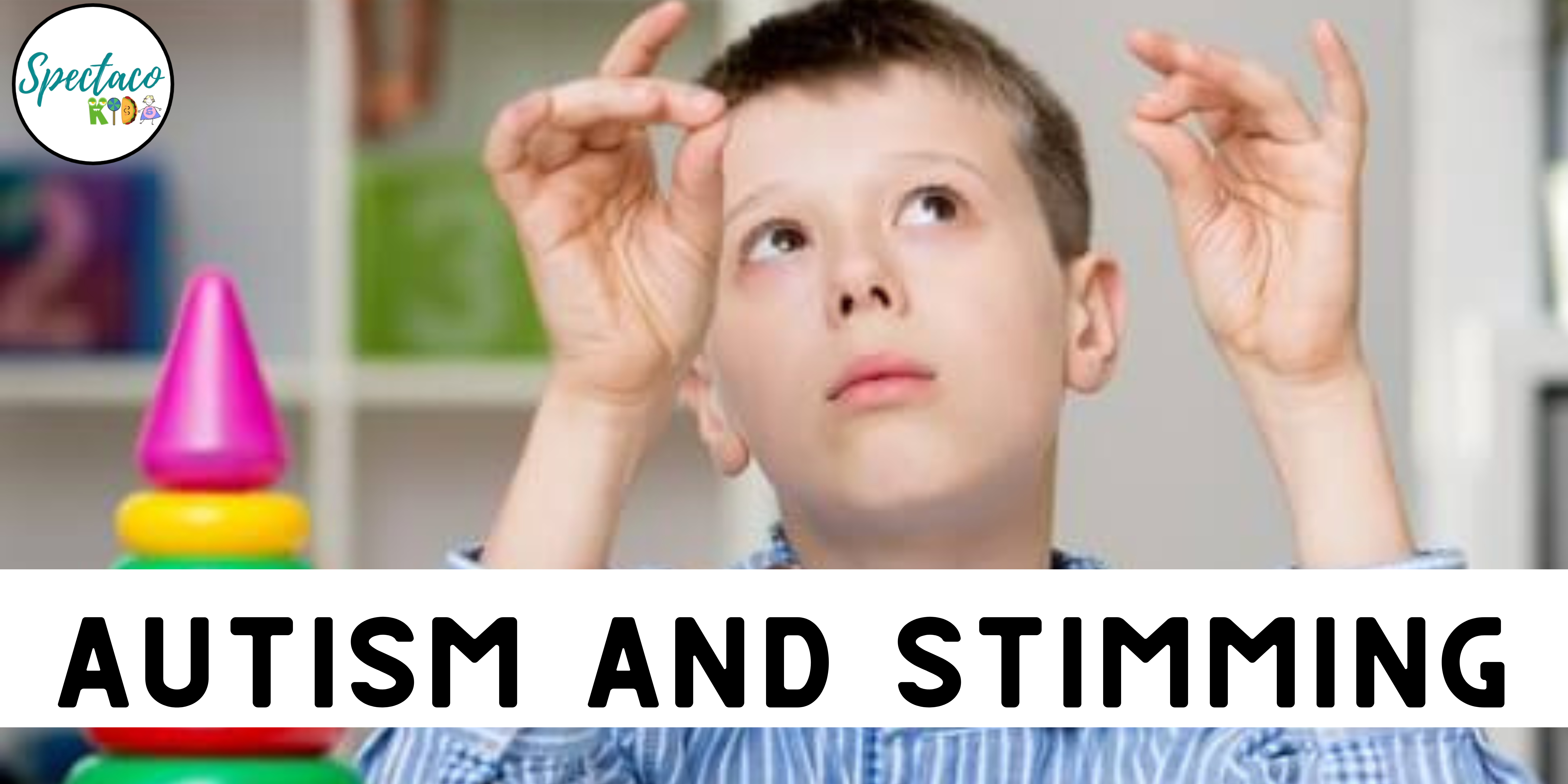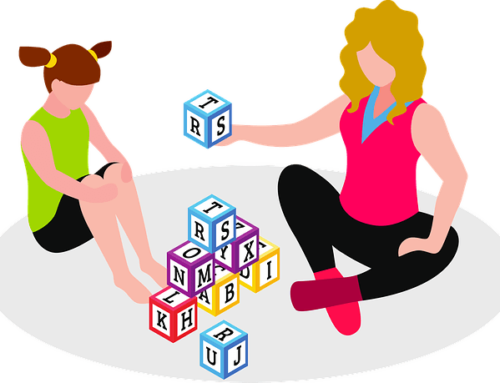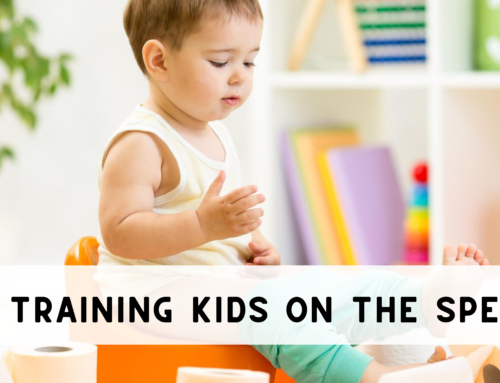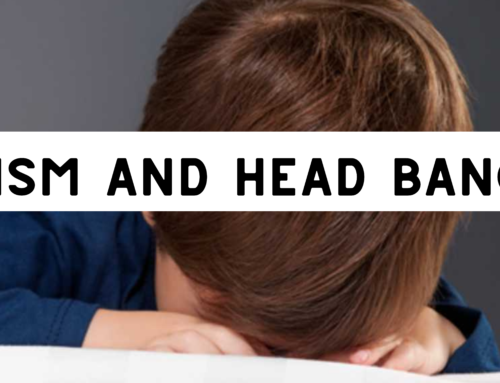What Is Stimming?

Stimming refers to self-stimulatory behaviors that involve repetitive movements and sounds. Although stimming is most commonly associated with autism, it can also be found in non-autistic individuals. For instance, tapping your feet when nervous is an example of stimming. However, when talking about stimming in the case of autism, what must be considered is the type and quantity of the behavior being expressed. At times, stims like hand-flapping or rocking can get out of hand.
How To Identify Stimming?
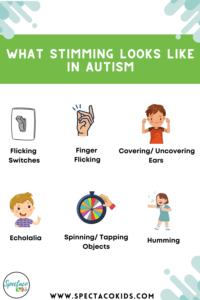
To identify whether your child is stimming, carefully notice the way they behave. Stimming is often said to occur when something happens very repetitively and comprises of an action that is not socially welcome. Examples of stimming include:
- Rocking or pacing back and forth
- Hand-flapping
- Finger- flicking
- Spinning or twirling
- Echolalia (repeating words or phrases)
- Humming
- Hard blinking
- Opening and closing doors
- Flicking switches
- Finger- snapping
- Spinning or tapping objects
- Covering and uncovering the ears
Is Stimming Harmful?
Although many stims may look rather puzzling and odd, not all are harmful. An autistic individual may use stimming as a way to get past the feelings of being distressed or overstimulated, but it does not always occur during such times only. Many people on the spectrum also stim when they are very happy or excited.
Despite this, stimming is not perceived positively, especially because some stims can cause self-harm and are alarming to others. If stims have the potential to be harmful, then the individual certainly needs help managing them. Some examples of potentially harmful stims are:
- Excessive nail biting
- Excessive self-rubbing or scratching
- Head banging
- Hand biting
- Ear – clapping
- Slapping or hitting oneself
Is Stimming Beneficial In Any Way?
Although the debate around what causes stimming is ongoing, healthcare professionals believe it to be a tool for emotional self- regulation. For autistic people, stimming can be a way to tone down or block out excess sensory input.
People on the spectrum often have sensory processing dysfunction, which means they either over- respond or under – respond to stimuli such as smells, textures, and sounds. For instance, they may be overcome by a strong odor and experience sensory overload (hypersensitive) or they may be less sensitive to stimuli (hyposensitive) and react to certain things, like loud noises for example.
In these sensory situations, stimming can be helpful to autistic people in certain ways highlighted below:
- Overstimulation – Stimming can block excessive sensory input during hypersensitivity
- Understimulation – Stimming can provide the necessary stimulation to those who are not very sensitive to things
- Pain Reduction – Stimming can help distract from physical discomfort and pain.
- Regulation of Emotions – Stimming can help manage both positive and negative emotions that may feel too difficult for an autistic person to handle.
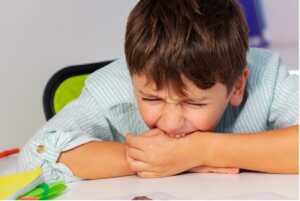
However, stimming can become a serious problem if it impairs an individual’s ability to self-regulate their emotions. If the behaviors persist for too long or become very frequent, then sometimes stimming can come in handy to help overcome all that excessive emotion.
How Can I Manage Stimming?
If stimming is not problematic, then there is no need to stop an individual from doing so. Only when stims become very disruptive or dangerous, should they be managed to negate self-harm. Changing stimming behaviors can be quite the challenge. Thinking that punishing a stimming child will make things better is wrong, as it will only worsen the situation. It is important to remember that stimming is not bad behavior, it is simply a coping mechanism.
Here are some techniques that you can use to help an autistic individual manage stimming:
- ABA Therapy
- Environmental Changes
- Sensory Diet
- Stress Management Tools
- Medications
Applied Behavior Analysis (ABA) Therapy:
This is a kind of behavioral therapy that aims to help autistic children adapt to social situations that are beyond their understanding. It involves positive reinforcement for positive actions and consequences for negative ones.
Environmental Changes:
Sensory overload can be avoided, if necessary, steps are taken to remove environmental and social stresses. This could include enrolling your child in a smaller classroom, soundproofing windows, and rooms, and removing textures or lights that upset them.
Sensory Diet
A sensory diet is a form of occupational therapy that aims to reduce stimming by scheduling activities into a child’s day to meet their individual sensory needs.
Stress Management Tools:
Keeping objects like a stress ball or fidget to replace habits like rocking or hand- flapping can be quite handy as they can help an individual to transition to different stims. A swing set, quiet space or even noise – cancelling headphones can be quite useful when helping your child manage themselves.
Medications:
Consult your doctor first and if need be, they may prescribe some medicines that reduce the irritability and aggressiveness that fuels stimming.
When To Consult A Doctor?

Stimming does not need to be medically treated unless it is harmful to the individual or others around them. However, certain aggressive behaviors like head-banging, hand – biting, nail biting, self – scratching etc. can cause self- harm, which is why they must be addressed. Additionally, if the individual cannot self- regulate their emotions and stimming is getting worse, it is imperative to consult your doctor and seek advice about what is to be done next.
Overall, stimming can be quite concerning for parents and those around an autistic individual. However, certain steps can be taken to ensure the effects of stims are mitigated by helping your child learn self-regulate their emotions.
